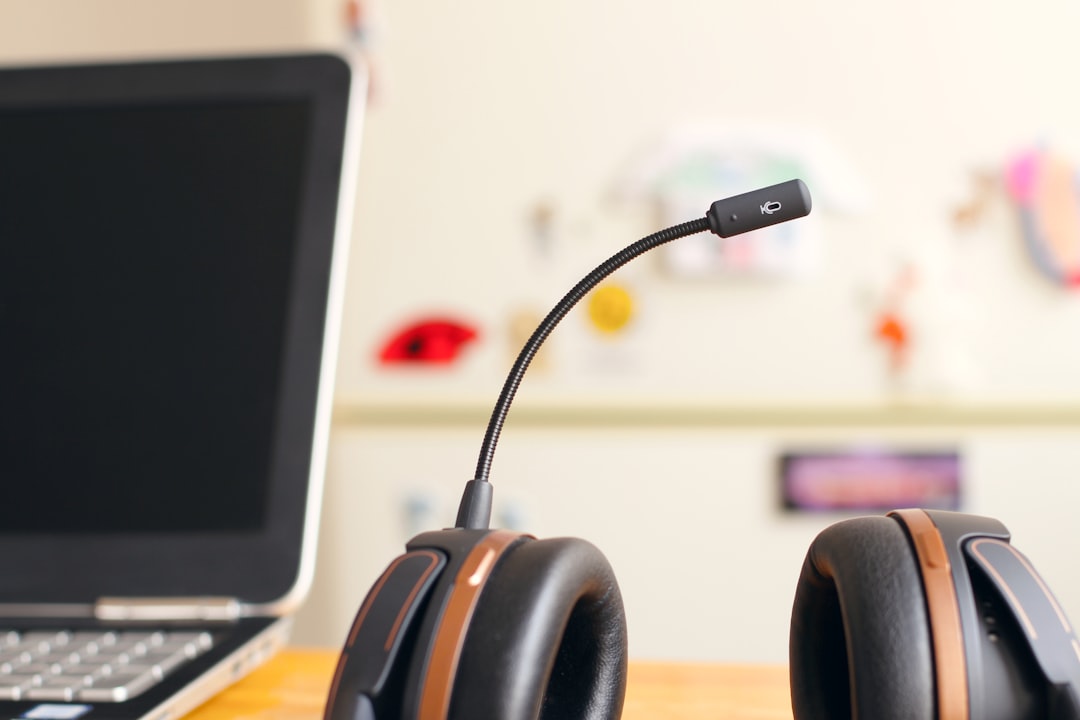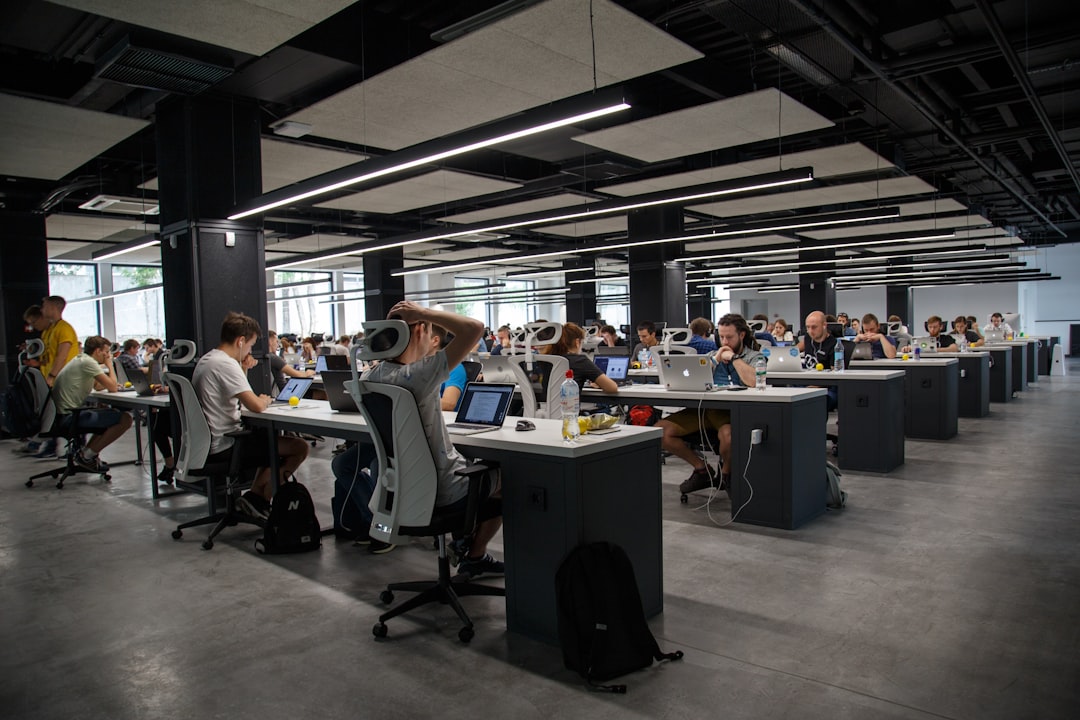Navigating Travelocity's Phone Support A 2024 Guide to Direct Customer Service Access
Navigating Travelocity's Phone Support A 2024 Guide to Direct Customer Service Access - Primary contact number for Travelocity support in 2024
Travelocity's main support line in 2024 is 1-888-872-8356, catering to a variety of customer service needs. While this is generally the recommended number, a couple of alternate numbers exist, including 1-855-201-7800 and 1-855-863-9601. For those needing quick action, especially for last-minute flight or booking adjustments, contacting Travelocity directly might be the best path. A less hectic method, is their Callback feature, allowing a more structured approach to your inquiry. And if your situation demands an immediate response, live chat is also available through their support channels. It's worth keeping in mind, though, that for refunds, submitting a written request is often a more reliable approach compared to calling. Written requests tend to be better tracked, usually with a unique reference number provided for your records.
Pinpointing the right Travelocity support number in 2024 can be a bit of a puzzle. While 1-888-872-8356 seems to be the main number advertised, it's worth noting that Travelocity has introduced a few alternative numbers like 1-855-201-7800 and 1-855-863-9601. It's curious how they manage to keep track of multiple phone lines for support.
It's interesting that Travelocity still leans heavily on phone calls even though they offer other options. It seems they are constantly tweaking their call centers, trying to reduce the time customers spend waiting. They have seen some progress in shortening wait times, with reports showing an average of about two minutes now. Apparently, new routing software and more staff are helping with this.
However, I've found that relying solely on automated menus tends to cause some frustration. People seem happier talking to a real person, which suggests that while automation has its benefits in efficiency, it's not a perfect replacement for human interaction when it comes to customer satisfaction.
Alongside phone calls, they also have a live chat system on the website and the app. Based on what I've seen, it looks like a sizable chunk of users are starting to prefer this method over traditional phone calls, which is a notable shift.
Interestingly, a majority of calls seem to be about changing bookings, getting updates on flights, or canceling trips. It highlights a trend where travel plans are more dynamic and people need help adjusting them often.
Travelocity's call center staff receive extensive training, now including scenarios designed to test their skills and ability to handle a variety of situations. The aim seems to be to improve their problem-solving abilities and communication skills, which is quite logical.
To better serve a diverse traveler population, Travelocity has increased the number of bilingual agents available. It's a positive development in a world of increasingly international travel.
Customer call patterns show that a significant number of calls concentrate around peak travel seasons, which isn't surprising. This knowledge could help people plan their calls to avoid excessive wait times.
Finally, it's worth mentioning that Travelocity is adopting the common practice of asking customers to rate their support experience. This provides real-time data that can be used to improve service quality on a continuous basis, which is a valuable insight into how customer service is evolving.
Navigating Travelocity's Phone Support A 2024 Guide to Direct Customer Service Access - Using the Callback feature on Travelocity's website
Travelocity offers a Callback feature on its website, a handy way to get help without enduring extended hold times. You simply click a button, provide your name, booking details (if applicable), and phone number, and Travelocity will call you back. They even give you an estimated wait time before the call. This approach can be a great choice if you want a more structured interaction or have a less urgent issue. However, even with this feature, concerns remain about the overall reliability and effectiveness of Travelocity's phone-based support. Many individuals still favor speaking directly with a live agent, emphasizing the inherent limitations of automated systems when it comes to fully satisfying customer needs. While the Callback option represents a positive step, it's just one piece of the puzzle in addressing the evolving landscape of customer service and the challenges of striking a balance between efficiency and human interaction.
Travelocity's website offers a "Callback" feature, allowing users to request a call back from customer service instead of enduring potentially lengthy hold times. This is particularly helpful during periods of high call volume, like peak travel seasons, when anxiety around extended waits can be a concern. By inputting their name, itinerary details, and phone number, customers can initiate the callback and avoid the stress of being on hold.
The Callback function also gives customers a chance to briefly describe their issue, allowing the representative to prepare in advance and potentially streamline the resolution process. This pre-call information exchange potentially leads to more efficient interactions and faster problem-solving. Interestingly, using the callback feature often translates to a reduction in background noise during the call, leading to clearer conversations.
Research on call center optimization suggests that Callback features are a strong contributor to higher customer satisfaction. The reason, seemingly, is that users feel more in control of their support interactions, eliminating the frustration of indefinite waiting. The technology behind Travelocity's Callback integrates algorithms that constantly monitor wait times, giving users an informed perspective on anticipated callback durations. They can then choose a time that best aligns with their schedule, based on the current level of call center activity.
While perhaps less well-known, users can sometimes blend the Callback feature with other support tools, like live chat. This can be a useful approach for maximizing time while waiting for the scheduled call, allowing for multi-tasking. Data on customer interactions suggests that, on average, callbacks lead to shorter call times than those spent waiting on hold. It seems that representatives are better prepared to address specific issues when armed with advance information.
Some analysis on Travelocity's customer data indicates a high rate of Callback feature reuse, suggesting it's not just a one-off solution but a contributor to customer loyalty. The feature operates on a first-come, first-served basis, though the underlying algorithms can also prioritize calls based on factors such as urgency and past interaction history. This suggests a degree of sophistication in how pressing issues are handled. Not every user, it appears, is aware they can modify their callback timing, adjusting the duration to fit their needs. The ability to tailor this setting is a valuable aspect of the feature, allowing travelers to better integrate it with their personal plans and activities when seeking support.
Navigating Travelocity's Phone Support A 2024 Guide to Direct Customer Service Access - Understanding wait times and peak call periods
When using Travelocity's phone support, understanding wait times and peak call periods is important. During busy travel times or when a lot of people are needing help, you can expect longer than usual hold times. Things like a high number of calls, not enough staff, and complicated customer issues can make wait times even longer. To avoid frustration, Travelocity's Callback feature is a smart choice as it helps avoid long waits on hold. As customer service practices evolve, having an idea of when the busiest times are can make your experience with Travelocity support much smoother. It's a bit of a juggling act for Travelocity to manage these peaks, and customers should be aware of the potential for delays.
When it comes to customer service calls, the volume of calls tends to surge during major holidays and weekends, mirroring the upswing in travel planning activity. This predictable pattern suggests that strategically choosing when to call can potentially lead to shorter wait times. It's interesting how these peaks impact the entire system.
Research has shown that when customers experience long wait times, the likelihood of them hanging up before getting help rises significantly. In many cases, after just five minutes of being on hold, over 30% of callers simply abandon the call. This emphasizes the importance of resolving issues quickly to keep customers engaged. This phenomenon is worth exploring further.
Larger call centers often have lower average wait times because they can employ more staff to handle the incoming calls. However, it's fascinating that studies indicate smaller, specialized call centers, even with highly trained agents, tend to see longer hold times. It seems there's a trade-off between specialized knowledge and overall capacity.
It's not surprising that when customer service agents have a heads-up about the customer's issue (like from a callback request), they can often resolve things faster, needing fewer back-and-forth interactions. This efficiency benefits not just the individual customer but also potentially reduces wait times for everyone else. It's like a ripple effect through the system.
The number of incoming calls seems to fluctuate throughout the day. The data indicates that the early morning and late evening hours are generally quieter. Customers who are flexible and can plan their calls during these slower times may find themselves on hold for a shorter period. It's intriguing to note this hidden pattern.
Various studies have shown a strong correlation between shorter wait times and higher customer satisfaction scores. Happier customers are more likely to return and tell others about their positive experiences. It highlights the significance of this easily measurable metric.
Facebook and Apple, among others, are pioneering the use of AI to improve call routing and automate responses. These technological advancements are gradually being adopted by companies like Travelocity. It's worth keeping an eye on how this field develops, as it could fundamentally change how call centers operate.
The average length of a call tends to increase during peak travel seasons. It suggests that travel issues during those times might be more complex, requiring agents to adapt their problem-solving strategies. It's an interesting trend related to customer behaviors.
A large percentage of people – up to 75% – would prefer to have a call center representative call them back instead of waiting on hold. This suggests a notable shift in customer expectations that companies like Travelocity need to acknowledge. It's important to understand what drives this behavior change.
Although many customers are aware that they can adjust their desired callback time, it appears that less than 40% actually do it. There is perhaps an opportunity to better educate customers about this helpful feature. This could involve improvements in messaging or onboarding processes.
Navigating Travelocity's Phone Support A 2024 Guide to Direct Customer Service Access - Alternative phone numbers for specific support needs
While Travelocity's primary phone number serves as a general point of contact, specific support needs might benefit from using alternative numbers. Alongside the main line, travelers could try 1-855-201-7800 or 1-855-863-9601, especially if time is of the essence. There's a growing sentiment that automated systems can sometimes hinder effective support, leading users to seek direct access to live agents when their situation is complex. As the way we interact with customer service changes, it becomes crucial for travelers to recognize which methods are best suited to their specific needs for a faster resolution. In 2024, the need for dependable and easy-to-access support channels has taken center stage, highlighting the shift in how travelers seek assistance.
### Alternative Phone Numbers for Specific Support Needs
It's intriguing to think that Travelocity, or any travel booking service for that matter, might have a network of separate phone numbers dedicated to specific types of support needs. It could be that they have lines specifically for billing problems, technical glitches, or maybe even dedicated lines for certain types of travel packages. Having separate lines like this could potentially result in faster resolution times since agents could specialize in those areas, leading to a more efficient process.
It's easy to see how this approach could boost operational efficiency. By analyzing call data and routing calls to specific lines based on the topic, the company could ensure that the right people handle each issue. It stands to reason that specialized staff would be better equipped to solve the problems quickly and accurately. And who wouldn't prefer to talk to someone who knows their stuff rather than a generalist? This method could result in greater customer satisfaction across the board.
Interestingly, some companies offer local phone numbers as an option for support. This seems like a good idea, especially if you're calling from a different area and want to avoid those annoying long-distance fees. It could be a great way to broaden accessibility and keep costs down for travelers.
There are also some sophisticated call-routing systems that are able to gather calls from multiple lines and direct them to a single queue. This is kind of clever as it means that from the company's perspective, it can streamline the entire operation, even while maintaining dedicated lines for special inquiries.
It makes sense that for a travel company, emergency services would require their own dedicated number, especially during peak periods like holidays and long weekends. You'd imagine situations like last-minute flight cancellations due to unexpected events would need a rapid response. It's crucial that customers have immediate access to support during these times.
Interactive Voice Response (IVR) systems also are used on these alternative support lines. These systems essentially let you navigate menus and select options to be connected to the appropriate department. This could be a good way to optimize the experience by guiding callers directly to the right staff without too much hassle.
Some travel companies have trained certain groups of agents to deal with specific kinds of inquiries, such as large group bookings or complicated cancellations. It's probably best to deal with those complex situations by letting experts handle them rather than hoping a generalist can figure it out.
When the call volume gets high, some support numbers are configured to dynamically switch to less busy lines to manage the load. This is particularly helpful during those peak seasons when everyone is traveling. It's clever how these systems can react to the changing demands of customer needs.
Companies usually keep track of their different support lines by monitoring key metrics, such as average call duration and how successfully the problem gets resolved. It's a way to assess which alternative numbers work best for specific kinds of customer support needs. This data can provide insights to improve future service offerings.
It seems that, as a way to continuously improve the support process, some companies are starting to implement feedback mechanisms on their alternative support numbers. After a call, they might ask you to rate your experience. This is valuable data that can help them tailor their support service over time, allowing them to learn from each customer interaction. This constant feedback loop helps ensure that the customer support system keeps improving.
Overall, the trend of using specialized support phone numbers suggests that travel booking companies are striving to optimize their operations and enhance their customer service. It will be interesting to observe how this landscape evolves.
Navigating Travelocity's Phone Support A 2024 Guide to Direct Customer Service Access - Preparing for your call tips for efficient problem-solving
Before contacting Travelocity's support, being prepared can make a big difference in how quickly your issue gets resolved. Understanding that call wait times can vary, especially during peak travel periods, helps set the stage for a smoother experience. Having a clear, concise summary of your problem, ideally with any relevant booking or account details readily available, ensures the agent doesn't have to spend valuable time getting up to speed on your situation. While being on hold can be frustrating, it also allows the agent to potentially gather the information needed to handle your issue effectively – use it wisely. And while automated systems have their place, interactions where you engage directly with the agent, explaining your circumstances in detail, tend to lead to more satisfying resolutions. Sometimes, a simple conversation is more effective than navigating through automated menus.
### Preparing for Your Call: Tips for Efficient Problem-Solving
1. **Know What You Want**: Before dialing, pinpoint your issue and what you hope to achieve. It's been observed that people who have a clear goal in mind before a conversation tend to get what they need quicker, reducing the need for endless back-and-forth.
2. **Have Your Stuff Ready**: Having all the necessary information at hand—like booking details or specific error messages—can make the whole process a lot faster. Studies show that when customers are prepared with the key information upfront, calls can be up to 30% shorter.
3. **Keep Notes**: Jotting down key points during the call can help you understand everything that's discussed and prevent any confusion later on. It's been suggested that taking notes improves problem-solving, particularly when things get complicated.
4. **Listen Carefully**: Pay attention and show the agent you're engaged by summarizing their points. It's been proven that being a good listener can speed up resolution and make the customer experience better.
5. **Time Your Call**: Call center data reveals that calling outside of busy times, like early mornings or late evenings, can significantly reduce hold times. Interestingly, these less busy periods seem to consistently have shorter wait times.
6. **Be Cooperative**: Approach the call with a collaborative spirit instead of being confrontational. Research suggests that a positive attitude promotes better cooperation, ultimately leading to a more satisfying outcome for both parties.
7. **Focus on the Important Stuff**: When describing your problem, stick to the essential details. Communication theory shows that keeping it concise and focused helps get to a solution faster.
8. **Use the Callback Feature Wisely**: If you're worried about long wait times, using the callback option not only helps you organize your thoughts but has shown to make calls around 20% shorter. Fewer distractions and agents being better prepared because of the advance notice seem to be the reasons behind this.
9. **Stay Cool Under Pressure**: Staying calm and collected during a tense exchange can have a big impact on the final result. Research shows that people who manage their stress better tend to negotiate more effectively and get better outcomes.
10. **Follow Up (When Needed)**: Once you've resolved the issue, it's smart to keep a record of what was discussed and follow up if necessary. This can help ensure that promises made during the call are kept, contributing to a more reliable service overall.
Navigating Travelocity's Phone Support A 2024 Guide to Direct Customer Service Access - New phone support features introduced in 2024
Travelocity's phone support landscape has seen some changes in 2024, focusing on improved direct customer service and easier access for travelers. The app has gained new features, such as access to flight details and the ability to message hotels directly, allowing for quicker resolution to issues while on the go. It's a move towards greater integration of communication tools to assist travelers. Behind the scenes, Travelocity has also been refining its phone support operations, with updates like call routing software to shorten wait times and generally make the experience smoother. They've also introduced a Callback option, which gives travelers more control over when they connect with a support agent. While there's still room for improvement in areas like automated menus, the changes in 2024 are a sign that Travelocity is trying to meet customer needs for convenience and immediate assistance, particularly in the dynamic nature of modern travel.
In 2024, Travelocity has introduced some interesting new features to their phone support system, aiming to improve the direct customer service experience. They've incorporated a visual element, allowing customers to send photos or screenshots to agents, which can be very helpful for complex issues. It's a novel approach that could potentially cut down on the back-and-forth typically associated with describing a problem.
Another interesting addition is a prioritized callback system for frequent travelers. It's based on a tiered algorithm that factors in past travel patterns. While this seems to cater to regular users, it's worth wondering how this prioritization might affect those less frequent travelers and their wait times.
The call routing system has also been improved with more sophisticated speech recognition. This could make navigating the initial menu system a bit smoother. It's curious how widespread the adoption of these voice-activated systems is, and how they handle those with strong accents or speech impairments.
Interestingly, Travelocity has embraced the omni-channel approach in customer support this year. A traveler can start a conversation via phone and seamlessly switch to live chat without having to re-explain the issue. This kind of integrated support system seems intuitive and could lead to more efficient problem solving.
There's also a new feature for automated follow-ups after a call, offering customers a summary of what was discussed and any outstanding tasks. This is a neat way to mitigate the issue of forgetting key information during a phone interaction.
Customers are now presented with real-time wait times when they call, which could potentially manage expectations and reduce frustrations when on hold. However, one might wonder how this system handles potential spikes in calls during unexpected events or peak periods.
Travelocity has also launched a dedicated customer support app for smartphones. This app offers call status updates and sends push notifications when a representative is ready to talk. It's a move toward mobile-centric service, and will likely be influenced by how quickly users adopt and rely on the features.
The support system is incorporating more behavioral data into the support process. Essentially, it's learning from past interactions to anticipate future problems. It remains to be seen how effective this approach will be in reality, and whether it may lead to situations where some categories of problems get overly favored at the expense of more complex issues.
A new feature assesses agent performance based on customer satisfaction and resolution rates. It's a metric-driven approach that is designed to ensure complex queries are handled by their top-performing agents. The overall efficacy of this approach, and whether the data actually leads to improvements, will be interesting to follow.
Finally, Travelocity has created specialized teams for specific types of travel, such as international bookings or group trips. It's a logical way to focus expertise for common, but intricate travel scenarios. While this specialization likely benefits the customers requiring those kinds of services, it will be interesting to see how it impacts the efficiency of other, more general support queries.
The overall trends indicate that Travelocity is putting considerable effort into enhancing the travel experience through proactive customer service enhancements. As users increasingly integrate technology into their journeys, the future success of these new features will depend heavily on their user-friendliness and ability to handle unexpected issues.
More Posts from mightyfares.com:
- →7 Pet-Friendly Hotels in Morehead City A 2024 Analysis of Amenities and Beach Access
- →Affordable Lodging Near Santa Monica Pier A Guide to Budget-Friendly Hotels in 2024
- →The Evolution of All-Inclusive Mexican Resorts A 2024 Analysis of Trends and Guest Experiences
- →Fort Lauderdale's Oceanfront Hotels A 2024 Analysis of Amenities and Beach Access
- →7 Hidden Off-Peak Travel Destinations for January 2025 with Significant Last-Minute Discounts
- →Why Local Travel Agencies Still Outperform Flight Booking Apps A Data Analysis from Ashburn's Top Agencies





